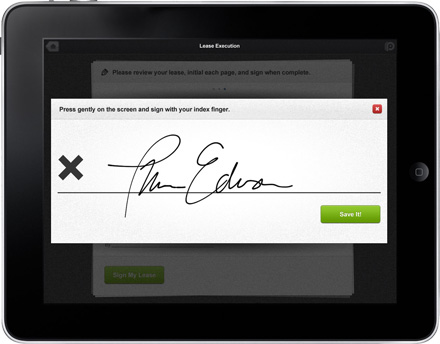What’s The Most You Can Pay For An Apartment Building?
by: Michael Blank
 A deal comes in for a 12-unit apartment building from one of your brokers. He faxes you a rent roll and a list of expenses. The asking price is $575,000, and he’s asking for what you want to do. It’s relatively easy to answer the question “is this a deal?” (the answer is usually “no”), the harder question to answer is “what is the most I would pay for this deal and why?”
A deal comes in for a 12-unit apartment building from one of your brokers. He faxes you a rent roll and a list of expenses. The asking price is $575,000, and he’s asking for what you want to do. It’s relatively easy to answer the question “is this a deal?” (the answer is usually “no”), the harder question to answer is “what is the most I would pay for this deal and why?”
When I first got started with analyzing apartment building investment deals, it took me about 4 hours to answer this question. This is extremely time consuming, and when you’re looking at a lot of deals, it can be overwhelming.
The trouble is, if it takes you too long to get back to the broker with feedback (or if you don’t get back to him at all), he will stop sending you deals. The same is true if you always respond with “that price is too high, it needs to be X”. Without usable feedback, the broker won’t know what you’re looking for and/or won’t be able to articulate to the seller why his asking price won’t work for you.
In this article I’d like to describe how to answer the question “what is the most I would pay for this deal and why”, and to answer it promptly.
How to Quickly Analyze an Apartment Building Deal using the 50% Rule
Step # 1: Determine your Investment Criteria
Before you can seriously answer this question, you need to decide what your investment criteria are. If you plan to syndicate the deal, you need to answer the same question for your investors.
What is the minimum cash on cash return and average annual return that you and your investors will be happy with?
For example, you might decide that you won’t touch anything with less than a 10% cash on cash return and an overall average annual return of 20%.
If you’re syndicating the deal, you need to decide what returns you want for your investors. What minimum returns will you need to show to attract capital?
Before you can analyze a deal, you need to determine your investment criteria. Otherwise, how will you know if you have a deal?
Step # 2: Determine Fair Market Value Using the Cap Rate
I’m not going to explain the “cap rate here (Bob Diamond does that in his REIClub article here), but I do want to give you some tips for determining what cap rate you should use in your analysis. The BEST way to determine what similar properties have sold at is to ask you brokers. Hopefully you’re working with a handful of good brokers who are feeding you deals. If they’re worth anything, they’ll tell you what the prevailing cap rates are in the area and will send you comps for the area you’re looking in. From that, you can create valuable information about the cap rate and price per unit.
Let’s assume that the prevailing cap rate for your market is 8% for similar buildings. That just means you have a way to assess “fair market value”, but who’s happy with that? You may decide that you don’t want to get into a building with anything less than a 10 cap, and that is a fine investment criterion.
Knowing the market cap rate is important for estimating the re-sale value and your financial projections later on. Also, it may be unrealistic to look for 10 cap deals in an area where everything else is selling at an 6-cap, make sense?
Step # 3: Assess the Value of the Building Using the 50% Rule
Now you can quickly assess what you want to pay for any deal that comes in. Assume the seller is reporting gross scheduled income of $100,000. In our income projections, we will use an occupancy rate of 90% unless the seller provides a lower number. If the reported expenses are less than 50% of income, then ignore what’s reported and use 50% to calculate the Net Operating Income (NOI).
Apply your desired cap rate to get the current valuation of the building:
If the asking price is above $450,000, you can now quickly get back to the broker and say that the fundamentals aren’t right. You can say that the expenses are clearly under-reported, or the vacancy rate, etc. You might say, “The expenses are way low. Assuming 50% of expenses, and using the reported rental income, in order to get at my desired cap rate, I could spend no more than $425,000” and see how flexible the buyer is.
Using the 50% rule makes it easy to quickly answer the question “what is the most I could pay for this apartment building investment deal and why?”. It will save you tons of timing in phase 1 of the analysis and makes you more responsive when a deal first comes in.
 Michael Blank’s passion is being an entrepreneur and helping others become (better) entrepreneurs. His focus in real estate investing is buying apartment buildings by raising money from private individuals.
Michael Blank’s passion is being an entrepreneur and helping others become (better) entrepreneurs. His focus in real estate investing is buying apartment buildings by raising money from private individuals.
Michael has been investing in residential and multifamily real estate since 2005 and began syndicating deals in 2010. He is the author of the Syndicated Deal Analyzer and the free eBook “The Secret to Raising Money to Buy Your First Apartment Building”.
This post provided by REIClub.com for creative real estate investors. Copyright 2002-2011 All Rights Reserved. Published with Permission of Author. No part of this publication may be copied or reprinted without the express written permission of the Author and/or REIClub.com


 The National Association of Realtors® expressed “extreme disappointment” over several of the provisions contained in U.S. House Ways and Means Chairman Dave Camp’s tax reform draft released yesterday, namely proposed limits on the mortgage interest deduction and capital gains, and the repeal of deductions for state and local property taxes.
The National Association of Realtors® expressed “extreme disappointment” over several of the provisions contained in U.S. House Ways and Means Chairman Dave Camp’s tax reform draft released yesterday, namely proposed limits on the mortgage interest deduction and capital gains, and the repeal of deductions for state and local property taxes. Running a criminal background check on every adult rental applicant under serious consideration is a must-do for any landlord who wants to protect profits.
Running a criminal background check on every adult rental applicant under serious consideration is a must-do for any landlord who wants to protect profits.

 Protecting residents’ personal information and privacy aren’t new concerns for property managers. After two decades of widespread Internet use, and improved technology, guarding personal data online still presents challenges.
Protecting residents’ personal information and privacy aren’t new concerns for property managers. After two decades of widespread Internet use, and improved technology, guarding personal data online still presents challenges.
 With rising water rates, persistent drought conditions, and a growing U.S. population, water conservation is becoming more important every day.
With rising water rates, persistent drought conditions, and a growing U.S. population, water conservation is becoming more important every day. 


